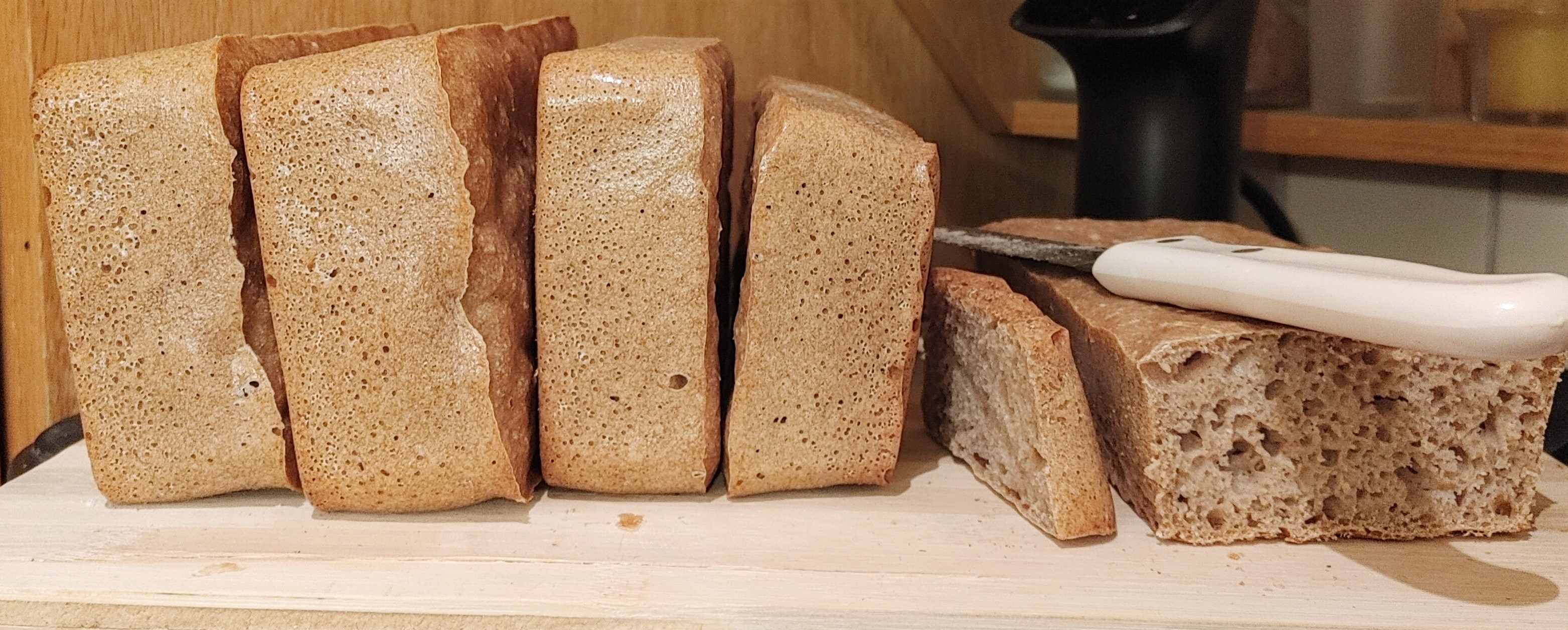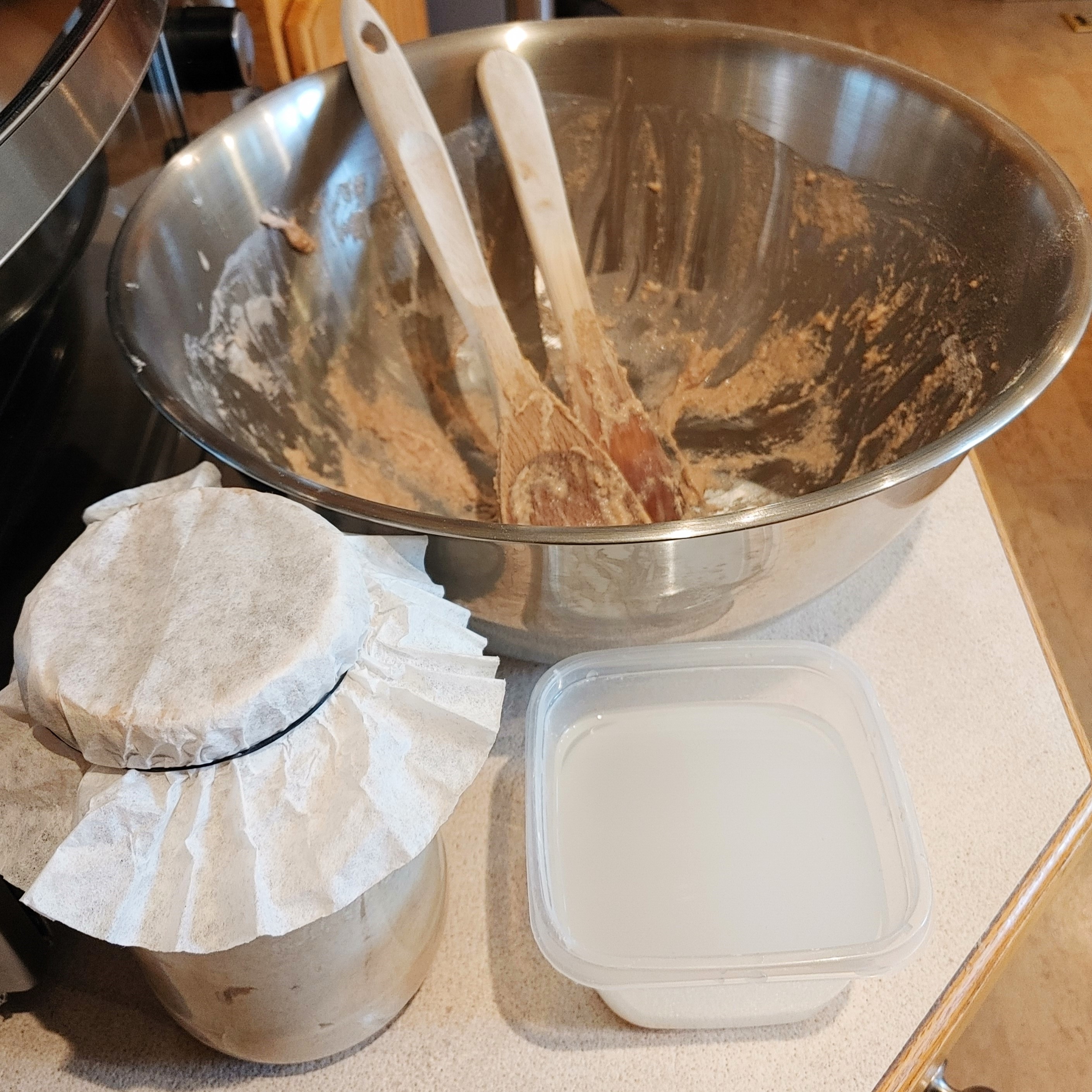
We've gathered several useful tips to make your sourdough experience smooth and easy.
Kneadless sourdough
If kneading is not your thing, this method is for you: In a bowl, make a 'soupy' dough akin to a thick batter, mix vigorously using two sturdy wooden spoons, and use the spoons to transfer the dough into baking molds. Your fingers will not touch the dough once. See pictures below.
Dip the spoons in water between handlings to keep the dough from sticking to them.
This method yields very moist dough. You may need to extend baking time so that the inside of your loaf is properly baked.
Make multiple loaves in one go and have them rise fast(ish)
The key is a very active starter, and lots of it.
- A pleasant room temperature is crucial. If you're a bit cold, so is your starter. Place your sourdough somewhere nicely warm. The warmer the kitchen, the more active the starter.
- Proliferate your starter smartly: Don't discard your leftover starter. Instead, use it to create another jar of starter. When making bread, use as much starter as you can from both jars. This will result in a lot of starter in your dough, which will rise in a matter of hours. (Lightning speed in the sourdough realm).
Reddish tint
To achieve the reddish tint, use whole wheat flour. See picture above.
Whole wheat flour tends to rise a little less, and a little slower than white flour.
How do you know your dough is fermenting?
It will rise, bubble up, and fill the surrounding area with the unmistakable aroma of fresh and tangy dough.
How to store your starter?
If you're not planning on using your starter in the coming days, feed it again, let it start fermenting a little, and then close the jar and store it in the fridge. When you're ready to use it again, remove it from the fridge and allow it a day or two to become fully active. Feed it as normal. It will still leaven bread in the meantime, but will return to its youthful vigor only after a couple of days.



